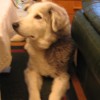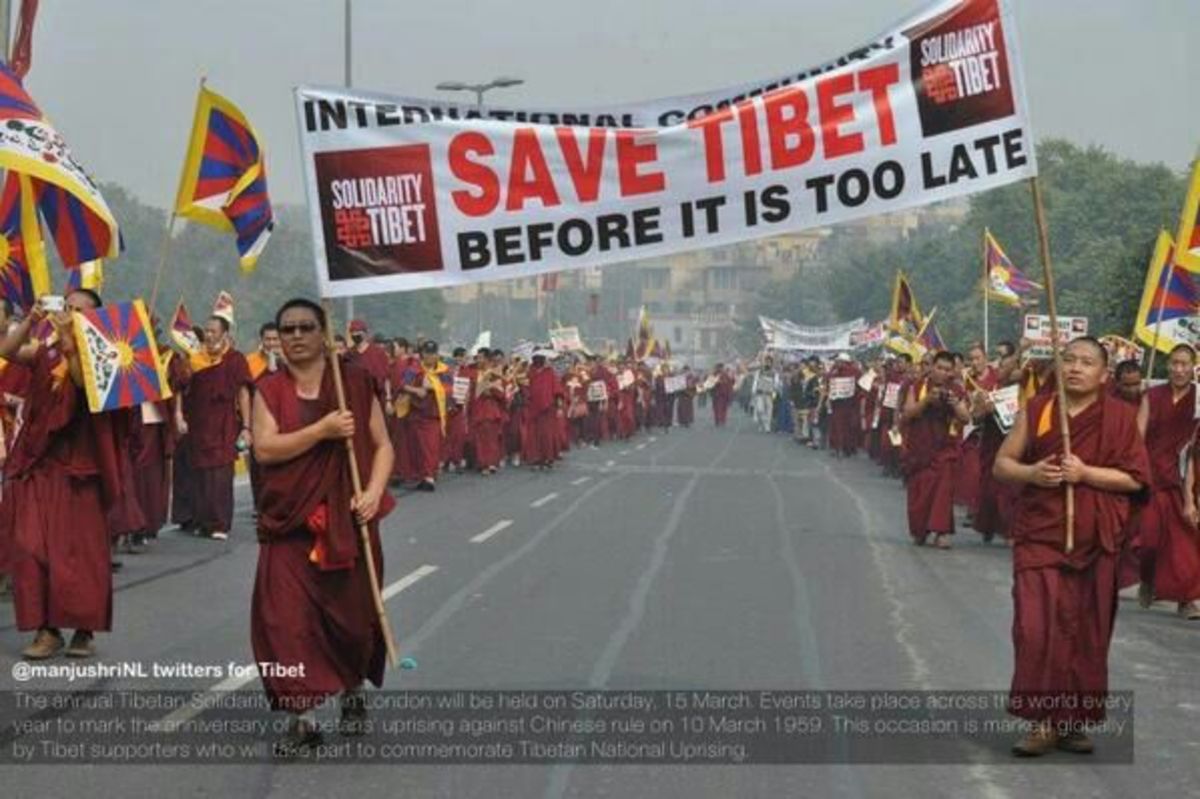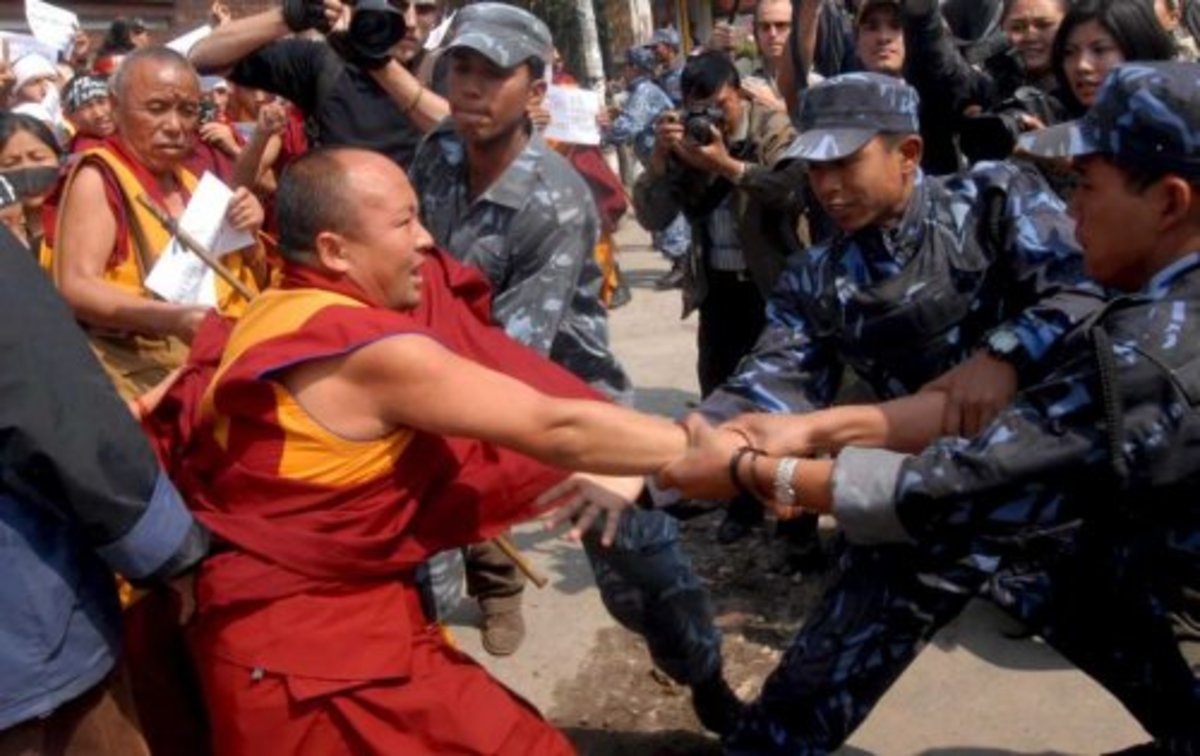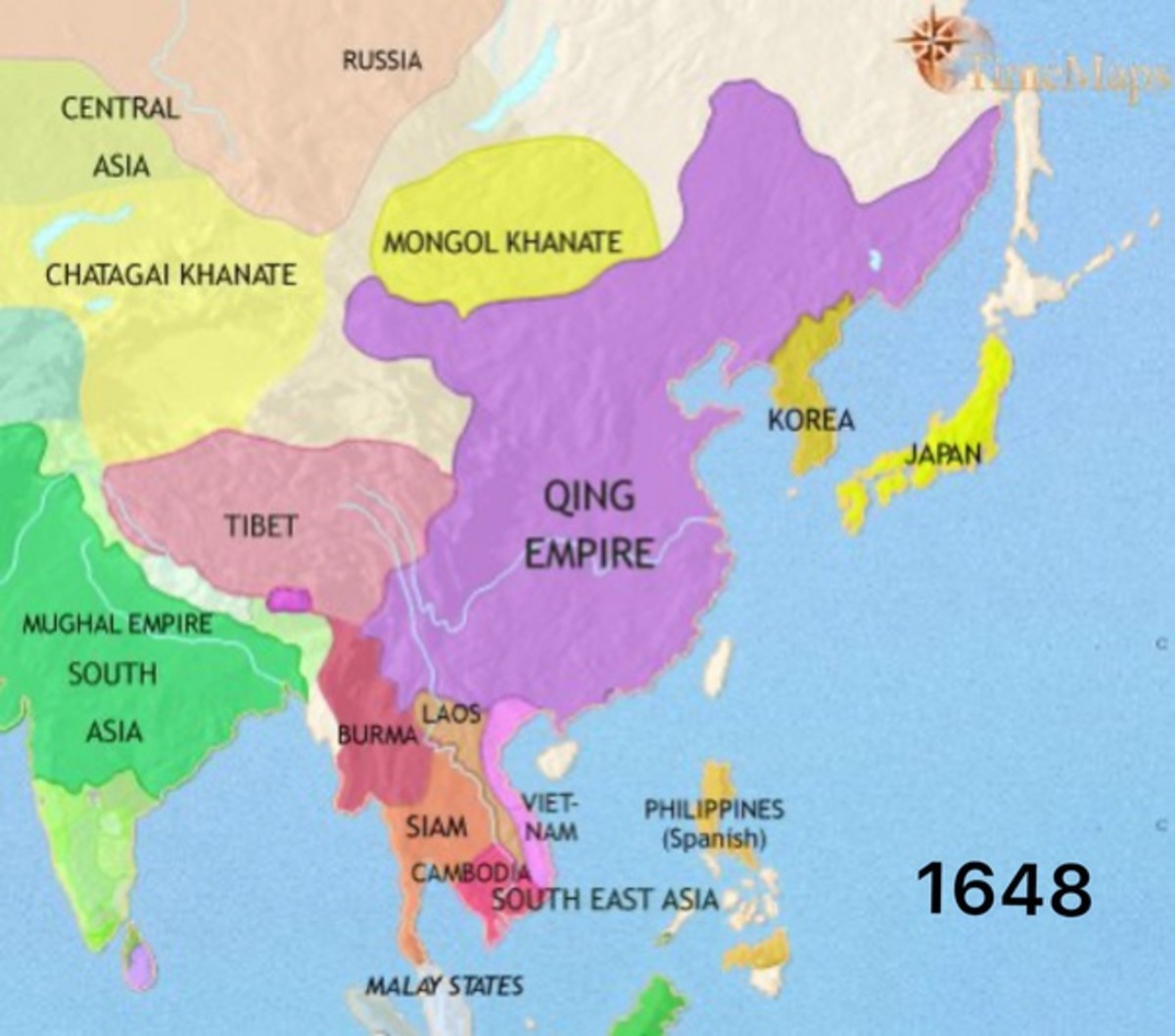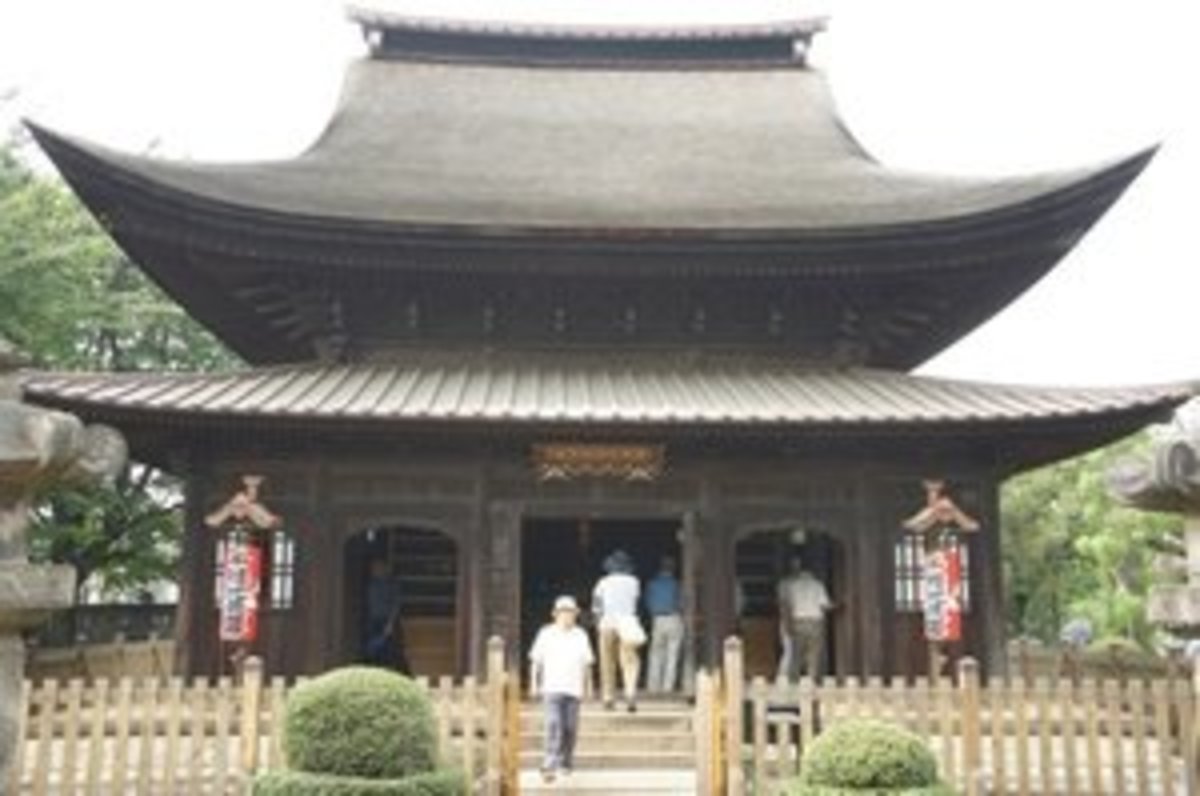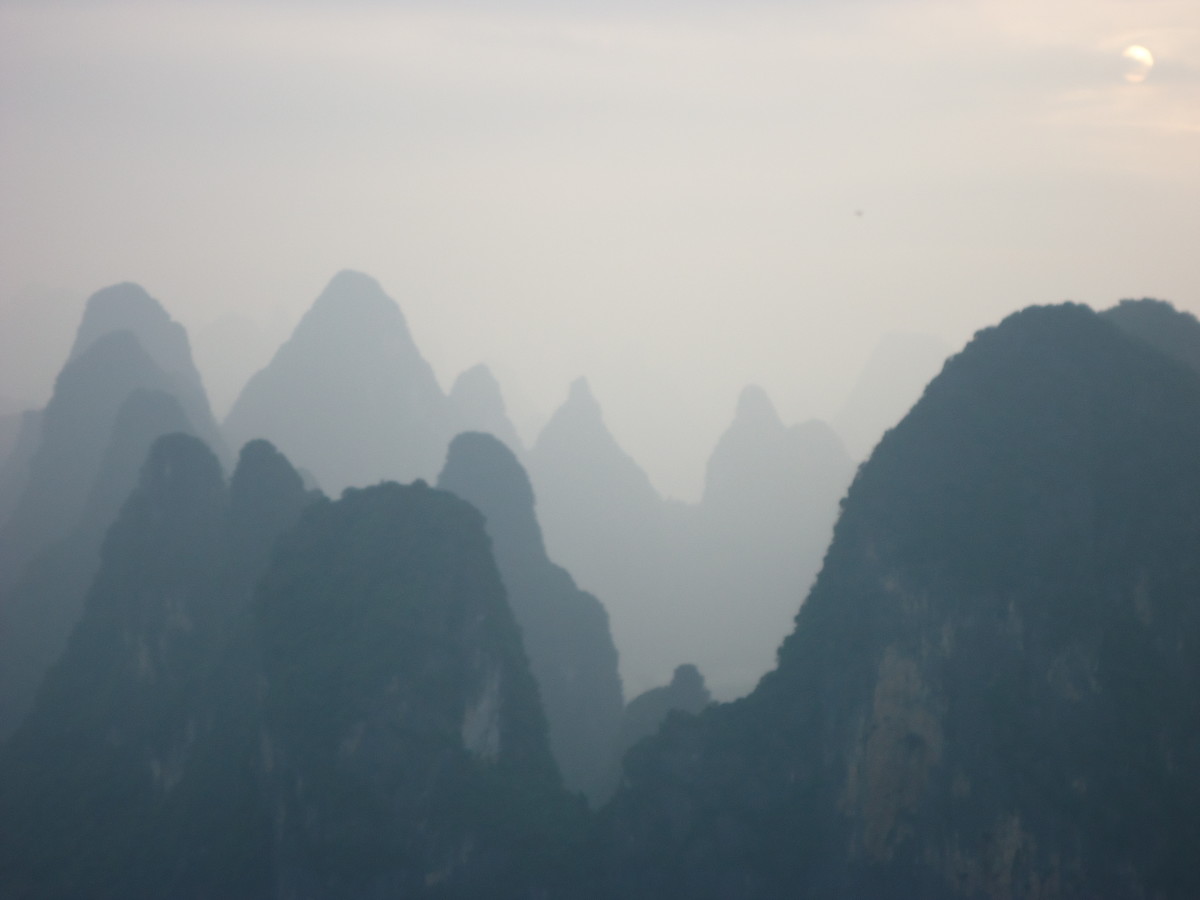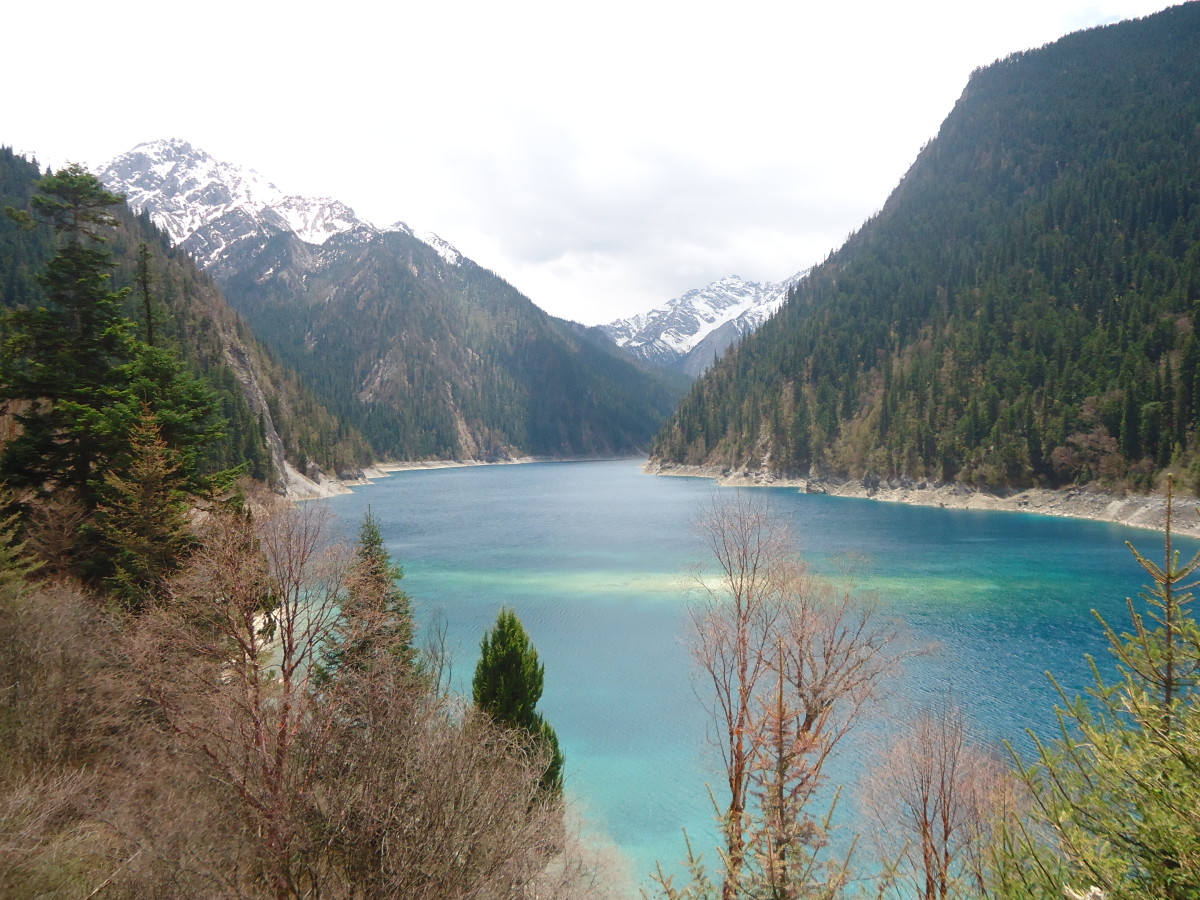- HubPages»
- Travel and Places»
- Visiting Asia»
- Eastern Asia
Fascinating Tourist Destinations of China: Potala Palace
Tourist Destinations of China: Potala Palace
The Potala Palace is a sacred Buddhist structure found in the lightly populated area known as the Chinese Autonomous Region of Tibet. Completed in 1648, the Palace served as the primary residence for every Dalai Lama thereafter until the 14th Dalai Lama, Tenzin Gyatso, who fled to India during the 1959 Tibetan uprising, surrendering the palace and Tibet’s capital city of Lhasa as a whole to the People’s Republic of China. Potala Palace was built on the site of a smaller palace that dates back to 637 during the Tibetan Empire. This ancient structure is said to have been nine stories tall. The current building is measured at about 1,312 feet from the east to west. From the north to the south, the structure is 1,148 feet in length. The sloping stone walls are over nine feet in thickness while ascending to the wall’s base which is 16 feet thick. Visitors to Potala Palace are often awestricken by the building’s seemingly miraculous construction nestled within the rugged terrain of Mount Potalaka. Currently the palace is home to 30 lamas despite it being converted to a museum
Potala Palace - Lhasa, Tibet
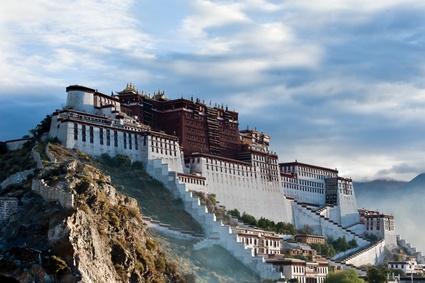
The Architecture of Potala Palace
The palace contains over 1,000 rooms, 200,000 statues, and 10,000 Buddhist shrines. At its highest point, the palace stands 13 stories tall. Potalo Palace was built atop Marpo Ri (also known as the “Red Hill”) which is found at over 1,000 feet above the floor of the Lhasa Valley. In 2006 the palace was listed as one of the “New Seven Wonders” of the world by the well known USA Today newspaper. The highly elevated central portion of the fortress-like palace is known as the “Red Palace” due to its distinguishing color. It was painted red to represent stateliness. This area is entirely devoted to prayer and Buddhist study. The Red Palace is an extremely complex structure consisting of a myriad of halls and libraries. Other levels contain small galleries and passages that differ in their widths.
The Great West Hall is the central hall of the Red Palace; it consists of four highly revered Buddhist chapels known as the North Chapel, The South Chapel, the East Chapel, and the West Chapel. The North Chapel (also known as Saint’s Chapel) is the holiest shrine of the entire palace. The door leading into the chapel contains an inscription from the tenth Chinese Qing emperor stating that Buddhism is a “blessed field of wonderful fruit”. Inside this chapel is a jewel encrusted statue of the bodhisattva Avalokitdeshvara seen with two assistants. On the floor below is a passageway that leads to a cave where the 7th century Tibetan emperor Songsten Gampo studied Buddhism.
Whereas the North Chapel focuses on Avalokitdeshvara, the South Chapel centers on Padmasambhava, a Buddhist saint who lived during the 8th century. A statue depicting him, his two wives, and eight of his manifestations meditating is located directly in the center of the South Chapel.
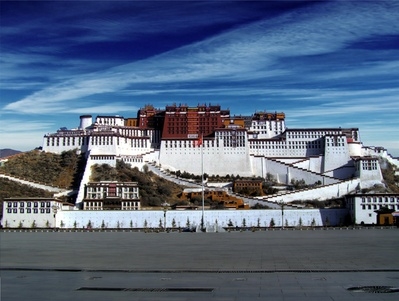
The East Chapel commemorates the 14th century Buddhist teacher Tsong Khapa. His statue is surrounded by lamas, who, according to legend where converted by Khapa. Other statues of Khapa’s assistants are spread throughout the chapel.
The West Chapel contains five large and famous golden stupas (a structure containing Buddhist relics). The central stupa, standing approximately 49 feet in height contains the mummified remains of the Fifth Dalai Lama. This stupa, constructed of sandalwood, is coated in 8,200 pounds of gold while being studded with 18,680 pearls and jewels. Within this chapel also rests the mummified remains of the 10th, 12th, and 13th dalai lamas.
The Red Palace is also home to three unique galleries. The first gallery, located on the story above the West Chapel has many large windows which offer light and ventilation. Between each of these are beautiful murals which depict the construction of Potala Palace in incredible detail. Another gallery filled with more artwork of varying types is where tourists can purchase drinks and souvenirs. The third and largest gallery consists of many murals and rooms branching from out from it. These rooms house gigantic collections of bronze statues and various figures crafted with gold and copper. This gallery also encompasses the chanting hall used by the Seventh Dalai Lama.
The other portion of Potala Palace is referred to as the “White Palace”. Here was the location of the Tibetan government’s main office coupled with the former living quarters of the Dalai Lama. The walls of the White Palace were painted white to symbolize peace and quiet. The Great East Hall is located on the fourth floor; this was the site where religious holidays and government accomplishments were celebrated. This space, housing many statues and murals occupies a space of 7,718 square feet. The fifth and sixth stories of the White Palace were used as governmental offices and living quarters of highly ranked officials. The uppermost floor of the White Palace encompassed the living quarters of the Dalai Lama himself. This floor is divided into two small palaces known as the East Chamber of Sunshine and the West Chamber of Sunshine. Potala Palace has gathered Buddhist relics such as statues, stupas, and murals for over 300 years. Tourist destinations that are found in remote areas such as the Potala Palace require a great deal of planning prior to visiting them
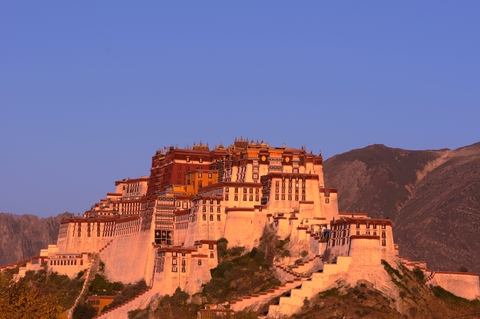
How to Get to Potala Palace and What to Expect
The Lhasa Gonggar Airport services several flights each day to Beijing, Shanghai, and all other major Chinese cities. Taxi fares from the airport to Polata Palace cost roughly 30 Yuan ($4.75) while a tricycle ride is priced at 15 Yuan ($2.37). Admission fees for Polata Palace vary depending on season. From November 1- April 30, tickets cost 100 Yuan ($15.85); from May 1-October 31 they are priced at 200 Yuan ($31.71). A limited number of 2,300 tickets are issued by the palace each day with 1,600 of them going to travel agents; the remaining 700 are reserved for individual tourists. Free certificates are given out at the palace for the purpose of allowing people to claim their right to purchase tickets. One individual can stake claim to as many as four certificates, guaranteeing his or her family and friends an opportunity to purchase entrance tickets. These certificates for purchasing tickets and entering into the palace are set for specific visitation times. By way of guided tour is the only option available to seeing Polata Palace; this tour begins only after a security check. Photographs are only permitted outside the palace. The tour lasts for 1.5 hours, much of which takes place in halls that are subject to the outside’s cold and damp weather. It is highly advised to wear clothing designed for cold climates, particularly if visiting the palace during the winter. There is only one opportunity to use a bathroom during the tour; this is about halfway through the tour. No liquids of any kind are permitted into the palace. Moreover, it is important to avoid the taboos of Tibetan Buddhism. For example, guests should not wear sunglasses, step on doorsills, or wear hats. Visitors to Polata Palace do not need to be in prime physical condition. However, they should be fit enough for lengthy walks, parts of which are uphill. The palace is open daily to visitors during the hours of 9am-4pm.
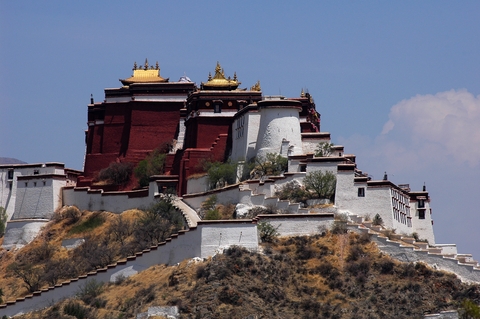
Conclusion
Potala Palace is the ideal place to visit for tourists wishing to discover a lesser traveled area within China. It has served as the center of Tibetan Buddhism since the mid-7th century. Therefore, it is a sacred place for those living in and around the palace. Guests are expected to respect these holy grounds by following the rules and regulations clearly posted in many languages near the palace’s entrance. The palace is located within the city limits of Lhasa, the capital of Tibet. Tibet, politically apart of China is considered to be an autonomous region of the country. The Tibetan borders, as dictated by the Chinese government closely resemble those of 1959 just prior to the fall the Tibetan state to the invading People’s Liberation Army (PLA) or China. Currently, Tibet is governed by a Chairman who is subordinate to the area’s Communist Party of China’s secretary. Since this system of governance was establish in 1959, the Chairman has always been an ethnic Tibetan while the party’s secretary will always be of Han Chinese ethnicity. The Tibetan Autonomous Region has the lowest population (three people per square mile) of any area governed by China.
